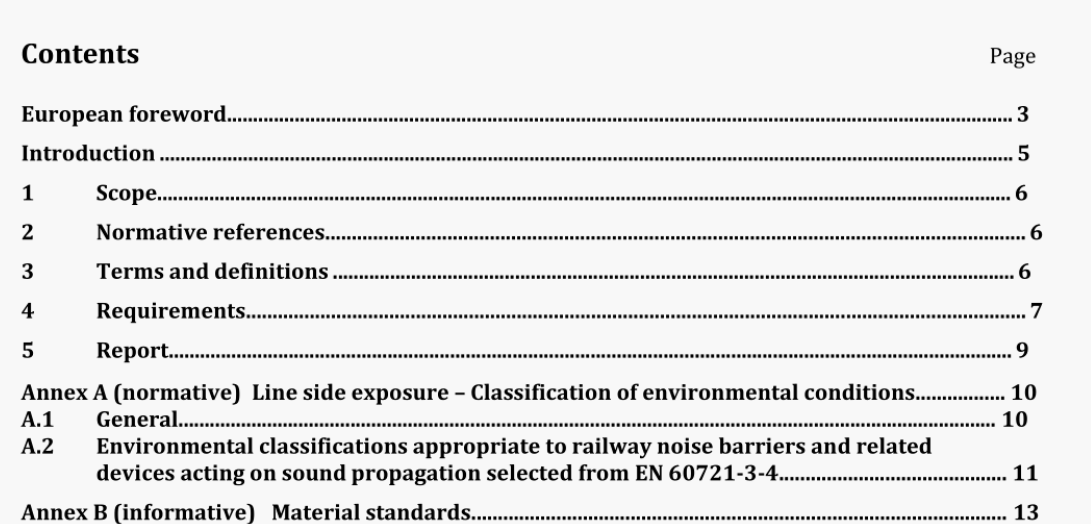BS EN 16951-1:2018 pdf download.Railway applications – Track – Noise barriers and related devices acting on airborne sound propagation – Procedures for assessing long term performance
1 Scope
This European Standard specifies requirements for assessing the working life and provides the relevant exposure conditions. Standards of construction and any material tests conducted should provide evidence of resistance to specified conditions selected from the following:
2 Normative references
The following documents, in whole or in part, are normatively referenced in this document and are indispensable for its application. For dated references, only the edition cited applies. For undated references, the latest edition of the referenced document (including any amendments) applies.
EN 60721-3-4,Classification of environmental conditions – Part 3: Classification of groups of environmental parameters and their severities – Section 4: Stationary use at non-weatherprotected locations (IEC 60721-3-4)
3 Terms and definitions
For the purpose of this document, the following terms and definitions apply.
3.1 noise barrier
noise reducing device, which obstructs the direct transmission of airborne sound emanating from railways, and which will typically span between posts and also may overhang the railway
Note 1 to entry: Noise barriers are generally made of acoustic and structural elements (see 3.3 and 3.4).
3.2 cladding
noise reducing device, which is attached to a wall or other structure and reduces the amount of sound reflected
Note 1 to entry:Claddings are generally made of acoustic and structural elements (see 3.3 and 3.4).
3.3 acoustic element
element whose primary function is to provide the acoustic performance of the device
3.4 structural element
element whose primary function is to support or hold in place acoustic elements
Note 1 to entry:In some noise barriers, the acoustic function and the structural function cannot be clearly separated and attributed to different components.
3.5 added device
added component that influences the acoustic performance of the original noise-reducing device (acting primarily on the diffracted energy)
Note 1 to entry:In some noise barriers, the acoustic function and the structural function cannot be clearly separated and attributed to different components.
3.6 line side exposure
use of the product as a noise barrier installed alongside railways
4 Requirements
Standard environmental categories selected for rail noise barriers and related devices acting on sound propagation with possible variations are given in Annex A of this document. The manufacturer shall provide the relevant acoustic performance characteristic (DLa and/or DLR and/or DLRI and/or DLsi) at the end of the working lifetime of the product and define the corresponding working life under the exposure classes, listed in the Table 1, adapted to the intended use of the noise barrier or related device acting on sound propagation. Where material standards exist, durability shall be assessed using them (see Annex B). Adverse effects on long-term performance of contact with the ground shall be taken into account. If retention of water is likely to degrade the working life, the design shall ensure that water is not retained. The working life of structural and acoustic elements may be different; therefore they shall be assessed under the same exposure conditions when installed on the same site.
BS EN 16951-1:2018 pdf download
